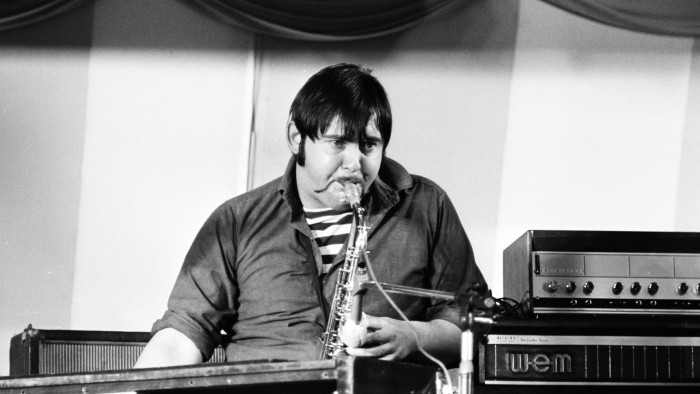The Life of a Song: ‘Wade in the Water’

Simply sign up to the Life & Arts myFT Digest -- delivered directly to your inbox.
When Melody Maker interviewed the British blues-rock musician Graham Bond about his album The Sound of 65, the sax and organ player didn’t bother toning down his usual brash certainty. Explaining why he had opened and closed the tune “Wade in the Water” by ghosting a Bach cantata on Hammond organ, the Graham Bond Organisation showman was blunt: “We’re playing the blues of today and I can get away with playing practically anything.”
The same scarcely applied to those unnamed men and women who might have sung the original spiritual out of which Bond’s raucous account grew. In mid-19th-century America, the song’s biblical references to the Israelites’ flight out of Egypt — “Who’s that young girl dressed in white / Wade in the water / Must be the children of the Israelite / God’s gonna trouble the water” — were reputedly pulled into service as code to help slaves planning to escape.
Harriet Tubman, a former slave and leading “conductor” on the so-called underground railroad that helped slaves escape in the 1850s, is said to have sung the spiritual at innocent-seeming gatherings — the lyrics intended to remind would-be fugitives to take to the water to throw pursuing bloodhounds off the scent.
In 1866 the Fisk Free Colored School opened in Tennessee, named after the abolitionist General Clinton B. Fisk. The school, now a historically black university, swiftly fell into debt. To raise money in the 1870s, it mounted a successful tour by the Fisk Jubilee Singers, students who performed traditional spirituals, including “Wade in the Water”, to white and black audiences alike. The singers also helped bring credence to spirituals as a concert form.
In 1901 the song was published for the first time, in a collection of the Fisk Jubilee Singers’ work. The preface hoped the book would be useful, especially as “it has been found almost impossible for the Caucasian to successfully catch and reproduce the peculiarly characteristic rhythm and harmony of melodies of this type”.
We’ll never know the exact cadences and rhythmic inflections of the slave-sung originals. A clue might come from the scratchy field recordings folk song collector John Lomax made of “Wade in the Water” for the Library of Congress in 1939 and 1940. They cemented the song in the folk repertory, but by then the Fisk Jubilee Singers and their songbooks had spawned the rich harmonies, call-and-response patterns and swooping bass of commercial gospel.
The first recorded version of “Wade in the Water”, by the Sunset Four Jubilee Singers in 1925, was typical of the genre. The Charioteers’ 1939 recording was even glossier, and by the time the Golden Gate Quartet recorded the song in 1948 individual voices were prominent, prefiguring the doo-wop groups of the rock and roll era.
“Wade in the Water” entered the soul-jazz repertory in the late 1950s. When musicians took to quoting the first bars of the melody while soloing on other tunes, they were alluding to the song’s coded past life, using it as a signifier to the hip and racially conscious. The first modern jazz recording was a swaggering arrangement by Johnny Griffin’s Big Soul Band in 1960.
By 1965, Graham Bond had hold of the song: the album version was short, but live it could take 10 minutes before Jack Bruce on bass and drummer Ginger Baker slammed in with gritty R&B and a template for heavy rock trio Cream.
A year later the opening brass fanfare, driving tambourine, soul-stirring handclap and joyful piano of the Ramsey Lewis Trio’s million-selling version became a longstanding club classic and a northern soul staple.
Secular vocal versions of “Wade in the Water” include Marlena Shaw’s jaunty 1966 cover — another northern soul favourite — under the title “Let’s Wade in the Water”. Veering straight off message, Shaw declares, “You know you got me sailing from midnight to dawn.”
And the original lyrics were bound to appeal to original “Hound Dog” singer Big Mama Thornton, who never could pass by a double entendre. She recorded it in 1968: “See that girl dressed in white, she like to wade all night.”
Lewis, who played London’s Ronnie Scott’s club in February, still performs “Wade in the Water” when he tours. And in March this year, PJ Harvey drew on the original lyrics of “Wade in the Water” to build the chorus of her anti-pollution song “River Anacostia”, thus keeping the song’s roots in protest alive.
Letter in response to this article
‘Wade in the Water’ was recorded in 1946 / From Robert Rowbotham
Comments